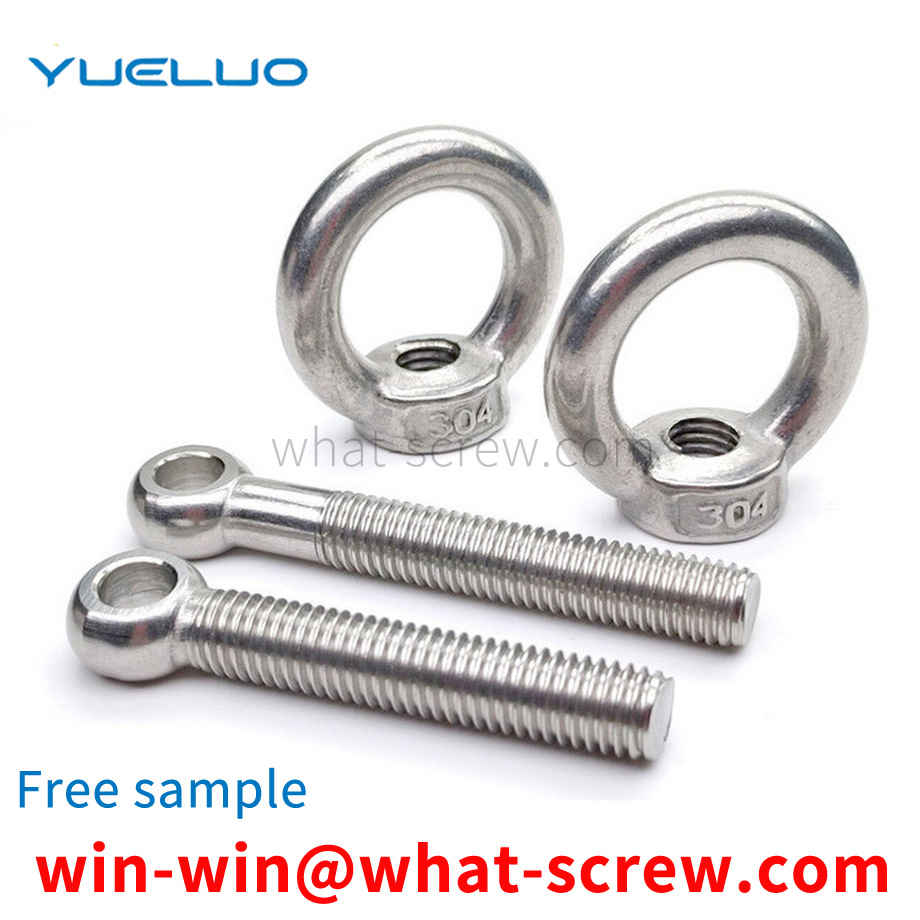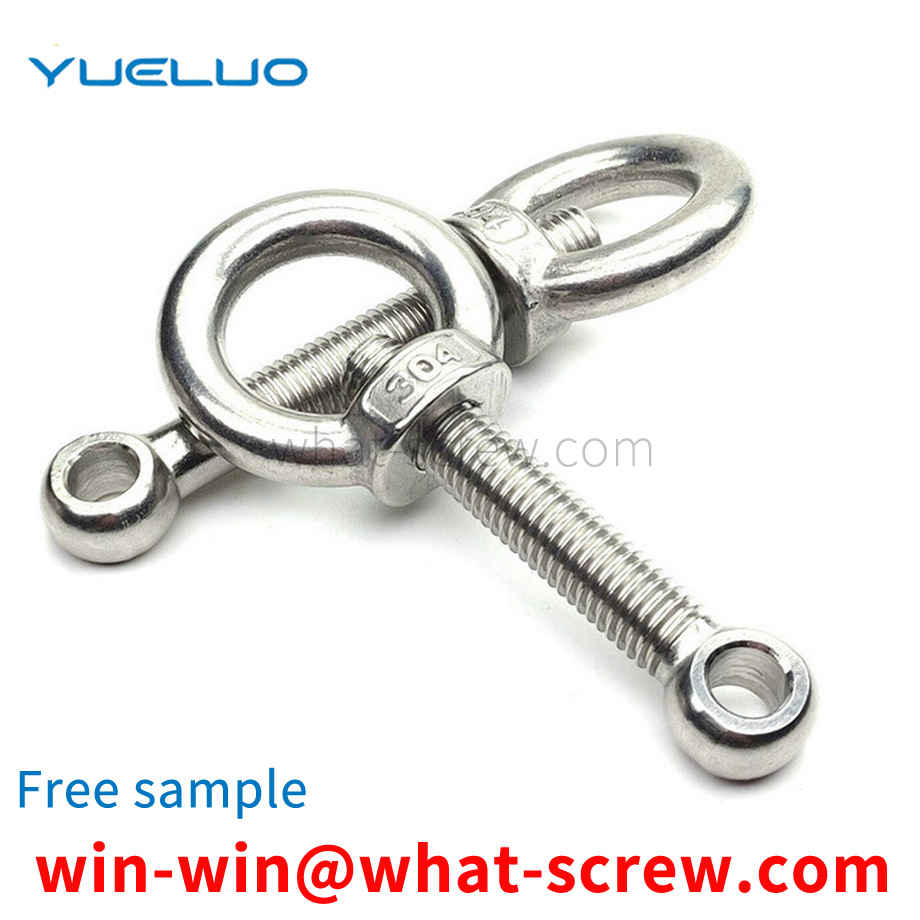The existing machine screw structure is not conducive to assembly and automated production. The machine screw is in the form of a cylinder, the outer surface of the cylinder is provided with threads, and one end of the machine screw is provided with a notch. During installation, it is convenient to rotate the machine screw by the tool acting on the notch, so that the machine screw all enters the threaded hole and does not occupy the external space. However, the thread on the outer surface of the machine screw corresponding to the slot is easily deformed or scratched due to the external force of the tool and the threaded hole, which makes it difficult to screw in or disassemble, and reduces the versatility and interchangeability. affect product quality.
At present, in the standard cabinets of computers, networks, automation, etc., to fix the equipment in the cabinet, it needs to be fixed by using fasteners. The nuts in the existing fasteners are ordinary nuts, which are internal card structures. , there are the following shortcomings: 1. The installation and disassembly are complicated, and a large amount of force is required to insert the nut during installation and disassembly, and the nut cannot be installed and disassembled at all due to the processing error of each nut; 2. After the nut is used for a long time, the nut The card edge will have slack problem, which will affect the use; 3. Installation or disassembly is easy to cause problems such as falling, which may cause electrical short circuit, etc., and there are potential safety hazards; 4. The efficiency of equipment installation is low.
Self-tapping screws were introduced into the industry in large numbers in 1914. The earliest design (essentially imitating a wood screw) was a thread-forming screw made of hardened steel with an A-ended end, mainly used to connect sheet metal channels for heating and ventilation systems. Therefore, it is also called: sheet metal screw. By the end of the 1920s, with the widening of the market and new applications, emphasizing new designs, its application performance was widely improved. The following introduces the four different stages of the development of self-tapping screws in 40 years: thread forming self-tapping screws, thread cutting self-tapping screws, thread rolling self-tapping screws and self-drilling self-tapping screws. 1. Ordinary self-tapping screws (thread forming self-tapping screws) Ordinary self-tapping screws are a direct product of early sheet metal screws. The principle is: when screwing it into a prefabricated hole, the internal thread connected to the screw is formed by the displacement of the material around the hole and the material is pushed into the space between the threads. 2. Self-cutting self-tapping screws (thread cutting self-tapping screws) Because ordinary self-tapping screws are formed only in very thin threads. And it can be easily realized on materials with good toughness. Develop and expand the use of self-tapping screws to thicker sections and harder, brittle and other materials with poor deformability. In this way, the self-cutting self-tapping screw is developed: a cutting groove or cutting edge is machined at the end of the screw shank. When this kind of screw is screwed into the prefabricated hole, the screw acts as a tap and actually cuts out the thread that connects with itself. 3. Self-Extrusion Self-Tapping Screws (Thread Rolled Self-Tapping Screws) In the early 1950s, fastener engineers began to recognize the potential advantages of self-tapping screws as structural rather than just lightly loaded attachments. This has led to the development of a new self-tapping screw thread rolling self-tapping screw (self-extrusion self-tapping screw). According to the design principle of cold forging taps, the thread and end are specially designed for this kind of screw, so that the screw can be formed by applying intermittent and periodic pressure on the crest of its thread instead of on the side of the entire thread. Internal thread for connection. By concentrating and limiting the forming pressure, the pressurized material next to the hole is made to flow more easily and to better fill (squeeze) into the flanks and roots of the thread of the self-tapping screw. Since the frictional resistance of screwing in is much lower than that of ordinary self-tapping screws, threaded rolling self-tapping screws (self-extrusion self-tapping screws) can be screwed into thicker sections. At the same time, it has better screw control and tightening torque, and greatly improves the connection strength and overall firmness. The engineering standard of this kind of self-tapping screw stipulates that the selection of materials, the mechanical properties of heat treatment and the working performance should be strictly controlled. 4. Self-drilling and self-tapping screws (self-drilling screws) People have done statistics: Among the ten expenses that constitute the total assembly cost, the highest one includes the processing of holes. In practical applications of self-tapping screws, prefabricated holes need to be processed. Moreover, in order to make the prefabricated holes have good effect in practical application, the size of these holes must be controlled within a fairly strict range. In the early 1960s, self-drilling and self-tapping screws appeared. A major step forward in reducing assembly costs by eliminating the need to machine prefabricated holes. In general, self-drilling and self-tapping screws realize drilling, tapping and tightening in one operation. These are the four main stages of self-tapping screw design and development. In addition, two newly developed products are also worthy of introduction. Both are screws with a special thread type. One is designed for plastic and other low-strength materials; the other is used in the construction industry to connect cement wall panels, so it is also called wall panel self-tapping screws.
Wire cutters are widely used tools in electromechanical and other industries, and rivets are widely used standard parts, especially in the manufacturing or maintenance process of the electromechanical industry. Because the currently used wire cutters are mostly used to cut finer steel wires or various wires and twist small screws and nuts. In the process of work, rivets of various specifications are often encountered temporarily. For example, suitable rivets cannot be found at the scene, or other replacements will cause inconvenience to the work, which not only affects the output, but also affects the quality.
The rivet nuts are divided into S series, CLS series and SP series. It provides a simple method for installing internal threads on precision metal sheet products, and plays a reliable fixing role. The small and delicate nut enables the plate to be embedded and processed on one side. When installing, just insert the nut into the hole of the metal plate. , to complete the setting firm function with pressure. When choosing to buy a rivet nut, you only need to provide a few elements: 1. Installation thickness 2. Internal thread size 3. What height do you require the nut to protrude from.
We have many years of experience in the production and sales of screws, nuts, flat washers, etc. The main products are: hexagonal plum blossom, grade 8 GB97 flat washers, smooth flat head screws, high-strength galvanized and other products, we can provide you with suitable products for you. Fastener Solutions.



















 Service Hotline
Service Hotline




